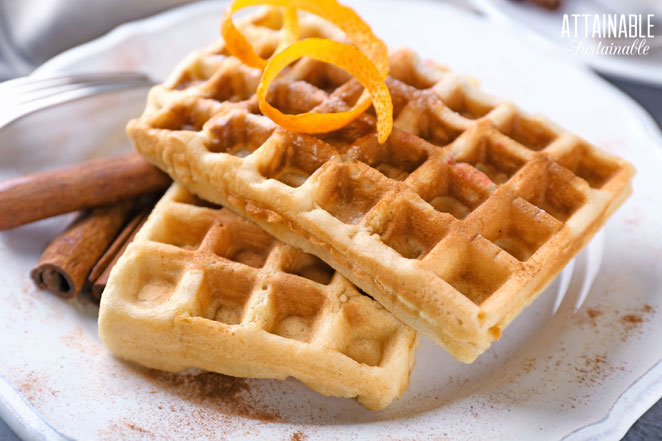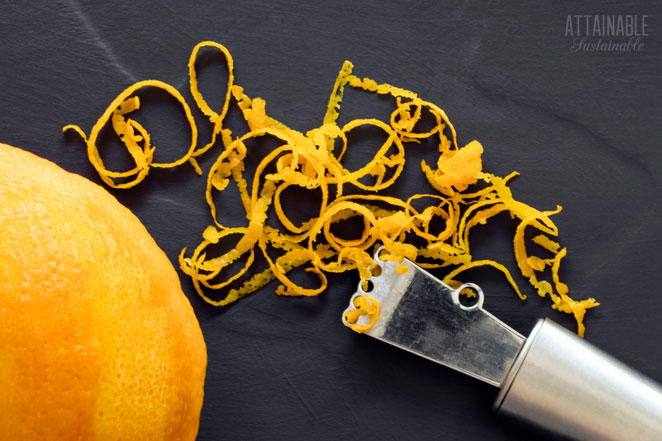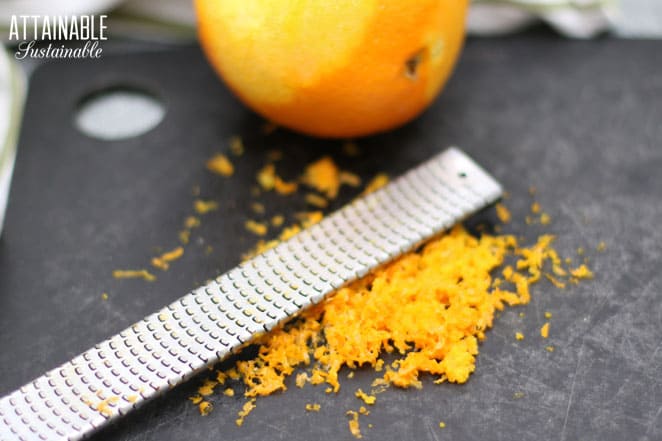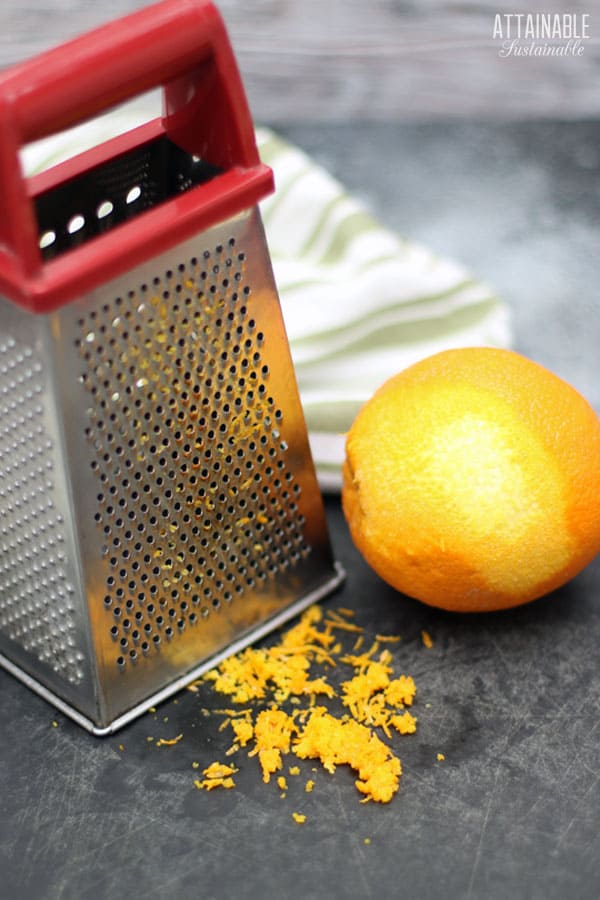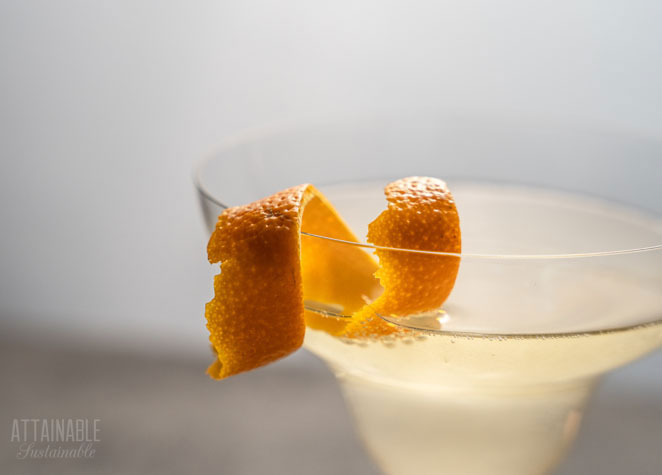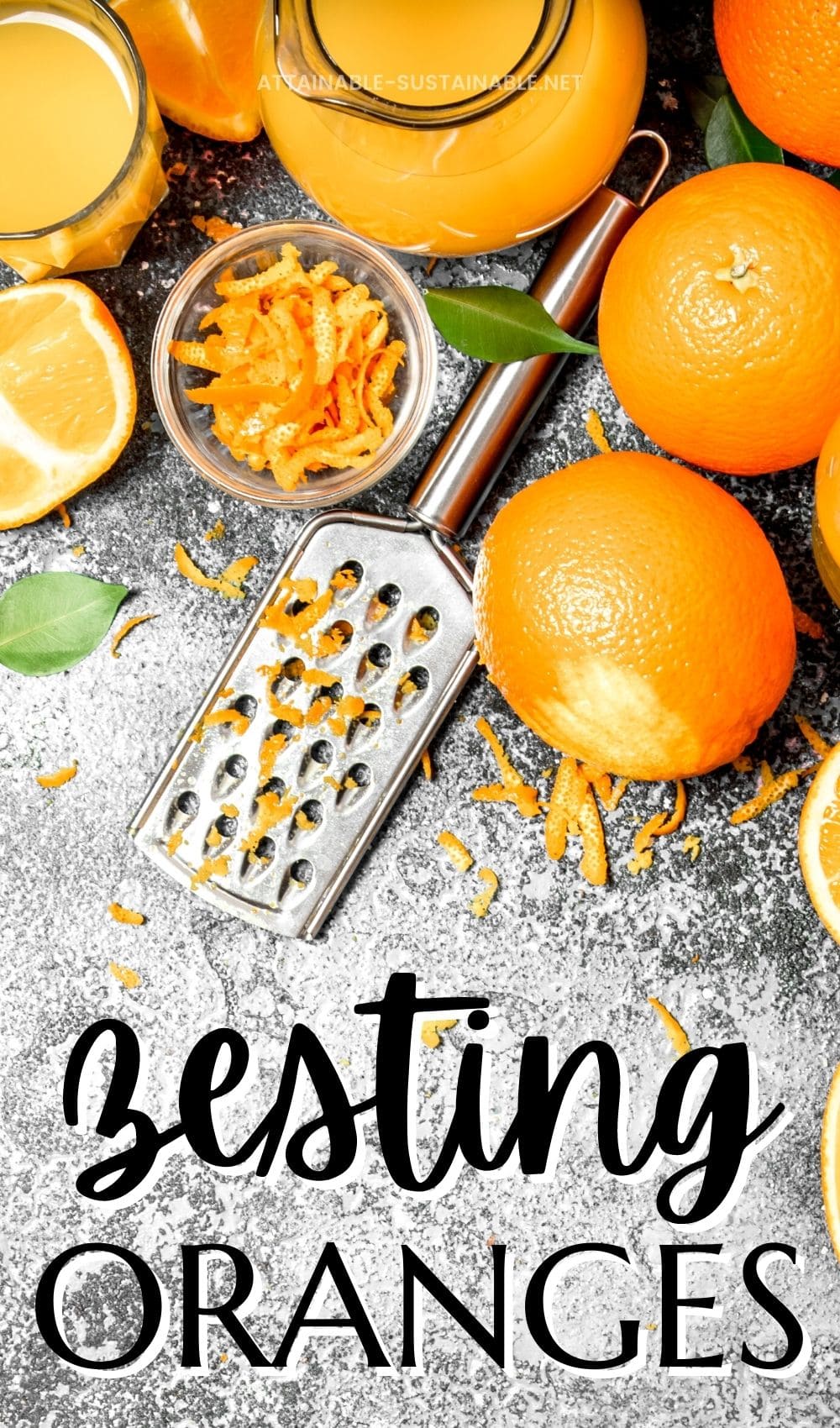Orange zest provides a bright flavor to dishes both savory and sweet. Below, I’ll walk you through what it is, how to make it, and how to use it.
If you’re new to cooking in the kitchen, welcome! This is part of my Kitchen Skills series, introducing you to some of the kitchen skills you’ll need to make delicious homemade recipes.
Read about more basic kitchen skills here.
What is orange zest?
It’s different from orange peel or orange skin, which includes both the outer orange layer and the bitter white pith. The zest is the orange-colored part of the fruit and full of flavorful, aromatic oils. Using the zest in recipes packs a punch of orange flavor.
You can use this method with other citrus as well. If tangerines are more readily available, they’re a perfect substitute for oranges.
You’d use this as an ingredient when you want orange flavor without the added liquid that comes with using juice.
How to zest oranges
First, it’s important to point out that you’ll want to zest the orange before you use the flesh. You’ll have a difficult time doing this once the orange peels are removed from the orange! The zested oranges are great turned into dried orange slices.
Once the orange is zested, you’ll be able to use the flesh as you’d like, for fresh eating or juicing. It’s a great way to get the most out of the fruit!
Be sure to thoroughly wash and dry the orange before you begin, especially if it’s a conventionally grown fruit that may have spray residue on it.
Choose one of the zesting methods below and grate or peel the zest onto a cutting board or into a bowl, being sure to avoid removing the white pith below the zest.
Yield
One orange will yield 2-3 tablespoons of zest. If you’re zesting tangerines, you’ll need two to get as much zest.
There are a number of methods that can work, depending on how your kitchen is equipped.
Citrus zester
This is a very specialized piece of kitchen equipment. A professional chef would probably tell you this is the best way to zest an orange, but personally, I like equipment that will do double duty in my kitchen, so I don’t have one of these. You can check out a zester here.
To use a zester, drag the business end across the skin of the orange. This results in long, slender curls.
Microplane
This is my preferred method to zest an orange (or other citrus). A microplane allows you remove fine shavings from the outer part of the orange skin, leaving behind the bitter pith. A microplane results in very fine zest.
To use it, drag a whole orange over the microplane, moving the orange slightly as the zest is removed. Continue in this manner until all of the orange color is removed. It’ll take just a few minutes to zest an entire orange.
Box grater
Not every household has a microplane. If you have a box grater, you can use the smallest holes to zest an orange. Again, drag a whole, unpeeled fruit over the microplane, moving the orange slightly as the zest is removed. Continue in this manner until all of the orange-colored skin is removed.
Vegetable peeler
Use a vegetable peeler to carefully remove just the orange portion of the skin, creating orange ribbons, thicker than you’d get with a zester. You can use the ribbons in strips, or make them smaller by chopping them with a knife. This is the most time-intensive way to generate small bits of orange zest, but if you keep a bare bones kitchen, it works just fine.
Storing orange zest
This flavorful ingredient is best used fresh, but if you have more than you can use, store it in an airtight container in the refrigerator for up to a week, or freeze for up to a month.
Recipes
Ready to make something delicious and orange-y? Try these recipes!
- Orange sugar
- Orange muffins with a chocolate drizzle
- Homemade orange liqueur
- Oatmeal blueberry pancakes
- Crockpot glazed carrots
- Italian panettone
- Orange creamsicle fudge
- Citrus chicken salad
- Orange pound cake
- Orange banana bundt cake

